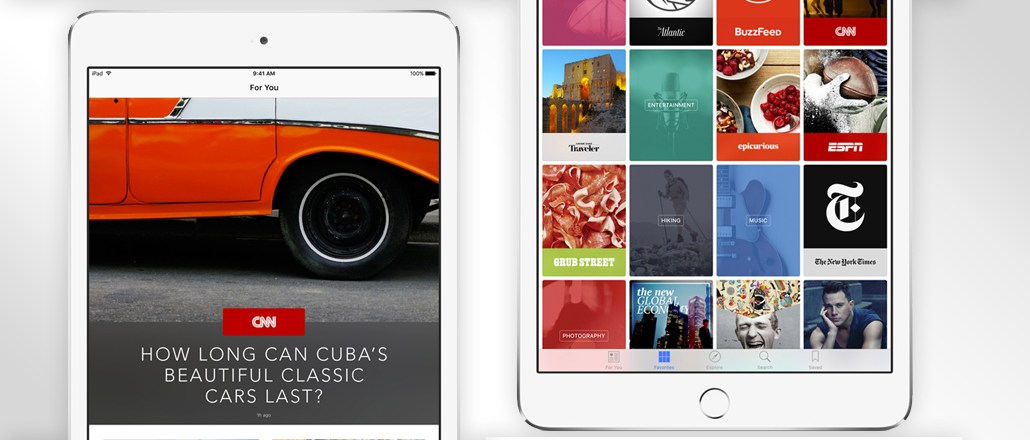
When Time Inc. CEO Joe Ripp expressed frustration with his company’s performance on Apple News last week, his complaints apparently were just the tip of the iceberg. Other publishing execs are unhappy about everything from the traffic they’re getting from the two-month-old news aggregation app to the user experience to the data Apple’s giving them.
It’s hard to really know how much traffic to expect from a new platform. But when Apple launched the mobile app Sept. 16, it was baked into the home screen for iOS 9, which reportedly has had the fastest adoption rate ever for Apple, with 66 percent of iPhone users having upgraded to it, as of Nov. 2. So given the adoption rate and Apple News’ coveted real estate, publishers pumped a lot of their content into the app, seeing strong potential to reach new audiences. (Apple said last month that the app has 40 million users.)
But as one publisher, who like others wouldn’t talk on the record for fear of jeopardizing their relationship with Apple, said, “The traffic is underwhelming.”
For that publisher, that means under 1 million views a month — not terrible, but not worth it considering the work involved to train staff in Apple’s process and to prepare the content for the app, much less take advantage of other features that Apple offered to entice publishers to use the app.
“They’re not generating a ton of views or traffic, and the data they provide is basically nonexistent,” another publisher said. “They claim they’re working out kinks, and they probably will. I’m disappointed, but I’m not giving up on it.”
Data is also a sticking point. Apple is providing weekly data reports including basics like the volume of page views and shares, but publishers want a dashboard that they can use to analyze data on demand, and more demographic data on users. To appeal to publishers, Apple was supposed to let them count the views toward their traffic and let publishers sell ads into the app. But publishers said Apple has been delayed in adding measurement firm comScore tags to the content.
It may not be an issue for publishers that aren’t getting much traffic from Apple News now, but if the app becomes a significant source of traffic, not having comScore’s independent tracking makes advertising a hard sell. An Apple spokeswoman wouldn’t say how much traffic the app was sending publishers but that it planned to integrate comScore into the app and a data dashboard “very soon.”
“The comScore tagging isn’t ready, we got delayed data on usage, and it’s still very limited, and selling ads isn’t easy,” one publishing exec said. “I don’t think this app will compete with Flipboard and wouldn’t be surprised if Apple stops updating/supporting it by end of next year. News aggregation is tough, and while they don’t necessarily need the revenue, it’s not a good business.”
Part of the challenge with a new app is structural. While Facebook, which similarly has been getting publishers to post directly to its app, already has a huge audience, Apple had to train people to open and use its new app. There are execution issues, too. There are more than 70 publishers in the app, but only a few get featured at a time on the app’s promotional screen, so some could be getting a big traffic advantage over others.
There are kinks in the user experience, too. Apple hasn’t provided ways to promote individual stories so they’re not all just in reverse-chronological order, as some had hoped. Two features of Apple News are its story personalization and recommendation, but the selections don’t seem especially personalized and the “related stories” section often contains other publishers’ version of the same story that the user clicked on, giving it a stale feeling. All this adds up to a feeling that Apple wasn’t ready for the app release.
Not all publishers are unhappy. The Washington Post (which is well promoted as the fourth featured on the app’s introductory screen after CNN, ESPN and The New York Times), is “pleased with how our content feels in Apple News and excited that it’s reaching new audiences,” said Cory Haik, executive director of emerging news products for the Post. “This is a fantastic discovery tool for new users to the Post and we’re very encouraged in how they are finding us.”
Even the disappointed aren’t ready to throw in the towel, though. They recognize the app is still new and that it takes a while for audience habits to form. And the risk of the traffic payoff not coming is still far outweighed by the fear of missing out on audiences and advertisers who are always looking for what’s new. Apple at least seems willing to work with them, if not always understanding of publishers’ priorities. At the same time, publishers are reportedly pushing for changes in Facebook’s Instant Articles, frustrated over challenges selling ads in the social network’s feature.
Such growing pains are the outcome of the growing interdependence of platforms and publishers, one exec observed: “Platforms don’t necessarily understand what it means to be a publisher and what’s important to publishers.”
More in Media

Podcast companies turn to live events to capture growing advertiser spend
The surge in the number of live podcast events in 2025 reflects a broader shift: advertisers are betting bigger on podcasts — not just as an audio channel but as a full-fledged creator economy play.

Media Briefing: ‘Cloudflare is locking the door’: Publishers celebrate victory against AI bot crawlers
After years of miserably watching their content get ransacked for free by millions of unidentified AI bot crawlers, publishers were finally thrown a viable lifeline.

How Vogue could navigate potential industry headwinds as Anna Wintour — who agency execs say made ad dollars flow — brings on new edit lead
Anna Wintour’s successor at Vogue will have to overcome the myriad of challenges facing fashion media and the digital publishing ecosystem.





